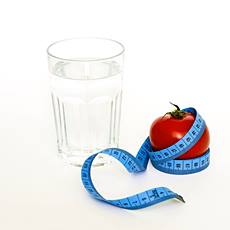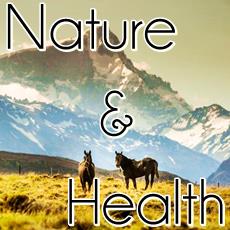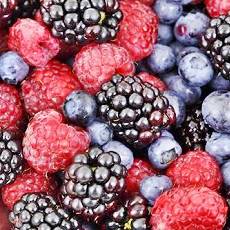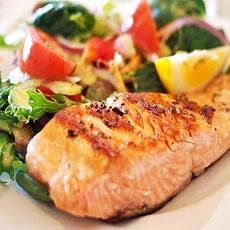The health benefits of Tumeric and curcumin
Tumeric a spicy antioxidant
First published: 28.Jan.2019
Tumeric or Indian saffron is the root of a plant that belongs to the ginger family. It has been used as a spice, for cooking (in curry for instance) and in traditional medicine in Asia (India, China and Southeast Asia) for centuries.
Modern science has been studying its antioxidant and anti-inflammatory effects as well as its possible therapeutic benefits in treating conditions such as cancer, diabetes, arthritis, and metabolic syndrome among others.
This article will review the evidence about tumeric & curcumin, its health benefits, its low bioavailability due to its poor absorption when taken orally, and potential adverse side effects.
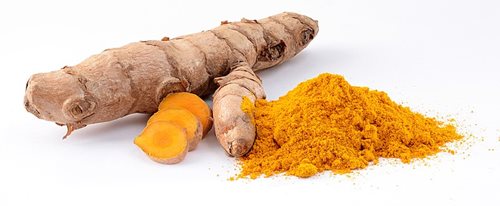
Simon A. Eugster
Tumeric
Tumeric (Curcuma longa) is a plant that is related to ginger, native to Southeast Asia and the Indian subcontinent.
Its roots, known as rhizomes have been used as a spice for cooking (it is a main component of curry powder) and in traditional medicine for millennia.
You will distinguish its slightly bitter yet sweet earthy flavor, with a soft pepper-like tang.
These rhizomes are either consumed fresh or as a powder -after being boiled, dried in ovens, and ground. They have a characteristic deep orange-yellow color.
This yellow color is produced by its principal active ingredients, curcuminoids that are used to dye cloth, color food, and tint natural cosmetics.
Nowadays, it is also sold as a supplement in the form of tablets, extracts, teas, and capsules. It is also used as an antioxidant and to promote weight loss (1).
The natural chemicals found in Tumeric
Tumeric powder, as found in stores, is composed of (2):
- 60 - 70% carbohydrates
- 6 - 14% water
- 6 - 8% protein
- 5 - 10% fat
- 3 - 7% essential oils
- 3 - 7% minerals
- 2 - 7% dietary fiber
- 1 - 6% curcuminoids < These are the active ingredients
Volatile oils include d-α-phellandrene, d-sabinene, cinol, borneol, zingiberene, and sesquiterpenes. Tumeric's aroma is due to the presence of oils such as turmerone, arturmerone, and zingiberene.
Regarding minerals, 100 g of tumeric contain 0.26 g phosphorous, 10 mg sodium, 2500 mg potassium, and 47.5 mg iron.
It also has Vitamins (values per 100 g): 0.9 mg thiamine (Vitamin B1), 0.19 mg riboflavin (Vitamin B2), 4.8 mg niacin (Vitamin B3), and 50 mg ascorbic acid (Vitamin C).
It is a good source of omega-3 fatty acid and α-linolenic acid (2.5% content).
Tumeric's Phytochemicals
Phytochemicals are biologically active compounds produced by plants and are the active ingredients in natural remedies.
Curcumin
Tumeric contains 1 to 6% of curcuminoids such as curcumin, demethoxycurcumin, and bisdemethoxycurcumin.
Of these Curcumin is the main component (making up roughly 1.5 to 3% of commercial tumeric powder). Curry, which also has other ingredients, has a far lower content of curcumin (approx. 0.3%).
Curcumin is a low-molecular weight polyphenol whose chemical name is (1,7-bis(4-hydroxy-3-methoxyphenyl)-1,6-heptadiene-3,5-dione), or diferuloylmethane for short.
It is an active ingredient that displays potent antioxidant, anti-inflammatory, and antimicrobial properties (3).
Tumeric oil
Tumeric also contains other compounds other than curcumin that may have similar properties to curcumin.
For instance, tumeric oil can enhance the bioavailability of curcumin and other tumeric components such as tumerin, tumerone, elemene -approved in China for the treatment of cancer-, furanodiene, etc..
All of these can be found in curcumin-free-tumeric and they also have biological activities including anti-inflammatory properties (4).
Tumerin
Tumerin is another water-soluble active ingredient. It is also a potent antioxidant, antimutagen and DNA-protectant. It is found in small amounts (0.1% of tumeric is tumerin) and is heat-stable (5).
Tumeric in Traditional Medicine
Tumeric is employed all across Southern Asia as an antiseptic to treat cuts, burns, and bruises.(2)
Tumeric or "Indian saffron" has been used in Indian Ayurvedic medicine for over 4,000 years to treat conditions such as fatigue, pain, breathing problems -asthma-, allergy, liver disease, and rheumatism (1)(2).
In the Thai traditional medicines it is used to treat rash, itching, and fungal infections like tinea and ringworm (6).
It is employed in Japanese (Kampo) and Chinese traditional medicine to treat digestive and abdominal ailments.
These traditional uses prompted formal research into its potential medicinal properties. We will see below that some studies have confirmed the health benefits of tumeric while others have not found any benefits at all.
Research into Tumeric's Health Benefits
Below is a list of research regarding the potential health benefits of tumeric.
Arthritis
In a double-blind trial (Hewlings & Kalman, 2017) (7) lasting six weeks involving 40 subjects with knee osteoarthritis, found that those treated with 500 mg per day of a curcuminoid (plus 5 mg of piperine -an active component of black pepper) showed significant improvements when compared to the placebo group: less pain, better physical function scores, but not in the stiffness score.
Turmeric extracts and curcumin can be recommended for alleviating the symptoms of arthritis, especially osteoarthritis. Hewlings SJ, Kalman DS. , (2017) (4)
Hewlings and Kalman also revealed that doses of 1,000 mg⁄day of curcumin reduced symptoms of arthritis such as inflammation and pain as effectively as ibuprofen or diclofenac sodium.(4)
Another study (8) found that curcumin's efficacy in treating rheumatoid arthritis was similar to that of the drug phenylbutazone.
Take-home point
Curcumin is effective as a treatment for pain and inflammation in reumathoid arthritis and osteoarthritis.
Treatment and Prevention of Cancer
Animal studies involving mice have shown that curcumin had a protective - preventive effect in cancer development. It decreased the number of tumors when compared to control groups (3).
A study involving humans ratified this preventive anti-cancer effect, suggesting that "dietary turmeric can act as an effective anti-mutagen in smokers and can reduce the risk of lung cancer" (8).
These anti-cancer properties derive not only from curcumin, but also from other non-curcuminoid compounds found in curcumin-free-tumeric (or CFT) (4).
Some of CFT's anticancer and anti-inflammatory compounds include: turmerin, turmerone, elemene, furanodiene, curdione, bisacurone, cyclocurcumin, calebin A, and germacrone (9).
The mechanism by which curcymin protect against cancer may be due to its anti-inflammatory and antioxidant properties, as well as it being an antiangiogenic that reducew growth of blood vessels that feed tumors.
Regarding non-curcuminoids, they alter cellular signaling pathways, inhibit enzymes and block cancer cell growth, provoking cell-death.
Take-home point
Some of tumeric's compounds have displayed chemoprotective anti-cancer effects.
Gut microbiome, curcumin and intestinal permeability: Leaky gut
Curcumin seems to have a positive effect on the intestinal microbiota. A study with rats found that eating a high-fat diet changed their gut microbiota's composition. But, when fed curcumin together with their high-fat meals, the composition of their intestinal microbiota changed back to that of control group that was composed of lean rats eating a normal diet (10).
> > Read more about Gut Microbiome diversity & Diet.
Leaky Gut
The cells that line the intestine form a "permeable" barrier that allows the body to absorb nutrients, water, and electrolytes and at the same time keep out harmful pathogens like bacteria, virus, and fungu.
This barrier is a contact point between foreign particles -antigens- and the body's cells ("self"). The immune system is regulated by the delicate balance of the barrier's permeable cell junctions.
The intestinal microbiota regulates this barrier, and pathogens such as H. pylori, E. coli or Salmonella can breach it. Stress, alcohol, and certain medications can also upset its balance.
Alterations of the intestinal permeabilty (also knwon as "leaky gut") can also be caused by high-fat diets.
A highly-permeable intestinal barrier is also linked to inflammation. Bacteria may lodge in the now leaky barrier and promote even more inflammation.
Curcumin has a positive influence on intestinal permeability
Several studies (10) show that curcumin inhibits the inflammatory response and lessens permeability by organizing proteins at the barrier's junction points.
Rats fed curcumin showed "improvements in the structure of tight junctions of the intestinal mucosa... and improved intestinal barrier function at multiple levels ... improved the histologic structure of intestinal mucosa." (10)
Irritable Bowel Syndrome
The causes of Irritable bowel syndrome (IrBS) are unclear. A pilot study (8) used turmeric extract on IrBS symptoms in 105 healthy adults for eight weeks and reported that those taking one tablet with 72 mg daily experienced a 53% reduction of IrBS. Those taking two tablets, had an even higher drop (60%). Both groups reported a marked decrease in symptoms.
Tumeric and other medical conditions
Its antioxidant, antibacterial and anti-inflammatory properties have been studied for several medical or health related issues:
Exercise-induced muscle soreness
Active volunteers who ingested 1 g of curcumin one and two days before a downhill running test experienced "significantly less pain in the right and left anterior thigh," they also had significantly less evidence of muscle damage and inflammation. The study concluded that "curcumin may be beneficial to attenuate exercise-induced muscle soreness." (7)
Ringworm
An antifungal cream containing 6% tumeric oil was found to be effective as a treatment against ringworm. The oil's major active ingredient, Ar-turmerone was far more effective than standard ketoconazole (6).
Candida infections
The yeast candida causes thrush or candidiasis in humans, a condition that curcumin is effective against. The antifungal activity of curcumin was notable (8): "curcumin was found to be more efficient than fluconazole in inhibiting the adhesion of many Candida species to human buccal epithelial cells."
Atherosclerosis and improved cholesterol
Accmulation of fatty residues (cholesterol) that thickens artery walls is a chronic disease that can be countered by lowering serum levels of cholesterol. The anti-cholesterol effects of curcumin were reported in a study that noted a drop of total cholesterol of 11.63%, and an increase in "good" HDL cholesterol by 29% (8).
This finding suggests that curcumin at an ingestion level of 500 mg per day can control atherosclerosis.
However, another randomized double-blind trial with 36 obese adults (they ingested 1 g of curcumin + 10 mg of piperine for 30 days) showed that there was no "significant influence on serum total cholesterol, LDL-C, HDL-C,... [or] body mass index (BMI) and body fat" when compared to the placebo group. The only positive effect was a significant reduction in triglyceride concentrations (1).
Probably the fact that this group involved obese subjects and the short duration of the trial led to this contradicting outcome.
Type 2 Diabetes
A double-blind, randomized study with 240 participants, found that 1.5 g per day of curcumin delayed the onset of Type 2 Diabetes in a prediabetes population after a 9-month treatment.
Not one case of Type 2 diabetes was reported in the curcumin-treated group, while the placebo group reported a 16.4% prevalence of the disease (8).
Tumeric and its bioavailability
To obtain health benefits from a chemical complex the body has to be able to absorb it so that it becomes "available" via the circulatory system to the body's organs.
This process is known as "bioavailability".
Oral administration of a biologically active compound (pills, tablets or as an infusion) usually decreases its bioavailability because it has to go through the digestive tract to be absorbed, suffering potential degradation in the stomach and in the intestine, plus possible breakdown by the gut microbiome.
Absorption of tumeric's active ingredients is poor, and only a small fraction of the ingested compound actually reaches the blood stream. To make matters worse it is rapidly metabolised in the intestinal wall and in the liver, and eliminated (in urine or feces) (7).
The Black Pepper effect
However the bioavailabiity of curcumin improves if taken together with piperine, an alkaloid which is the major active component of black pepper and long pepper.
Just 20 mg of piperine added to a 2 g dose of curcumin increased its bioavailabilty by 2,000%, a 5 mg dose of piperine duplicated the absorption of a 2 g dose vs. a control group. (7, 3, 11).
Take-home point
Take your tumeric with black pepper to improve its absorption.
Dosage for an optimal effect
Doses of 1.1 to 8 g of curcumin per day (1,125 to 8,000 mg) have been shown to be effective in slowing cancer progression (3). However, considering that tumeric powder contains 1.5 to 3% curcumin, to achieve those doses of curcumin you would have to consume between 38 and 533 g of tumeric powder per day. Considering that one tablespoon contains around 7 grams, this is equivalent to ingesting between roughly 5½ to 76 tablespoons of tumeric powder each day!
This is not feasible: how do you fit all that powder into your diet? And what about the safe daily ingestion recommendations?
Side effects and safety of Tumeric
The JECFA (The Joint United Nations and World Health Organization Expert Committee on Food Additives) and EFSA (European Food Safety Authority) have established a Allowable Daily Intake (ADI) for curcumin:
- Up to 3 mg/kg body weight.
A person weighing 180 lb. (82 kg) could ingest up to 245 mg, a value that is well below the "anti-cancer dose" mentioned further up (1.1 to 8 g).
The side effects for ingesting higher doses are: headache, diarrhea, rash, and nausea (All of which have been reported on doses ranging from 450 to 12,000 mg per day) (7).
The FDA has declared tumeric and its active component (tumeric oleoextract) as GRAS (Generally Regarded As safe) for use in foods, without setting any maximum daily intake values (2).
The National Center for Complementary and Integrative Health (NCCIH) (2020) (1) cautions "Turmeric may be unsafe for use during pregnancy in amounts greater than those commonly found in food. Little is known about whether it’s safe to use turmeric in amounts greater than those commonly found in food while breastfeeding."
Incorporating Tumeric into your diet
But don't feel discouraged, some studies (2) have reported that as little as 1.5 grams of turmeric per day may have biological activity. This is equivalent to 1 teaspoon of tumeric powder.
Tumeric can be added to sweet dishes as a spice blend, with ginger and cinnamon. It can be added to spices used to prepare curry-based dishes.
Traditional Indian tumeric milk (milk, sugar, and tumeric) or tea is another tasty option. See the recipe below:
Tumeric Tea Recipe
Ingredients
- 2 tsp tumeric powder or 1 Tbsp of grated tumeric rhizome.
- Spices (a pinch of cinammon, clove, and ginger powder of fresh ginger.
- 1⁄4 tsp of ground black pepper.
- 2 cups of water.
- Milk and honey.
Preparation
Heat water with the tumeric, the black pepper and spices in a pot -don't cover. Allow it to simmer for 10 minutes.
Strain into cup and add milk, and a touch of honey to sweeten it.
Enjoy it!
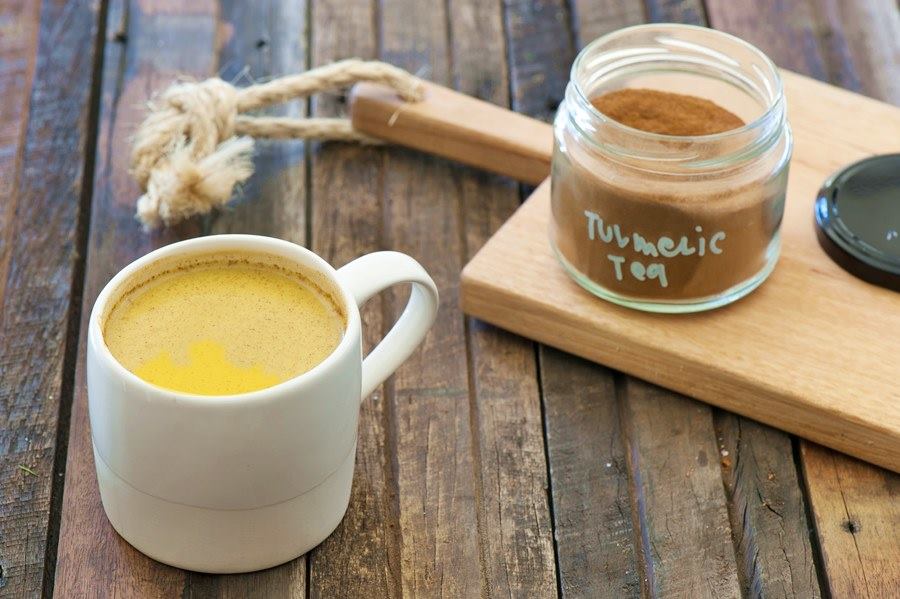
The Downside of Tumeric and Curcumin
But not all studies have found conclusive effects for curcumin or tumeric. Some have not found any, others only a limited effect similar to that of the placebo.
No anti-inflammatory or antioxidant effect detected
A double blind randomized study involving 62 overweight and obese women (BMI over 27), ages 40 to 75 years, affected with systemic inflammation, didn't find any differences in oxidative stress levels or inflammation between the group consuming red pepper spice or tumeric as a flavoring in foods, when compared to the placebo group. (12).
This study used both spices at "culinary levels", so perhaps the dose was too low or bioavaliability too poor to show any positive effect.
No antimicrobial effect on H. pylori
Ulcer causing -and also stomach cancer promoting- bacteria Helicobacter pylori experimented a limited anti-bacterial effect when exposed to curcumin (8).
Psoriasis
Very low response rate when treated with curcumin (8).
No effect against Alzheimer's disease
A randomized, double-blind trial with 34 patients suffering from Alzheimer's disease showed that the "Mini-Mental State Examination" score of the curcumin ingesting group did not improve when compared to the placebo consuming one. Furthermore, their blood levels of Amyloid Beta Protein (A β40 - which forms the amyloid plaques that deposit in Alzheimer's patients' brains) was not affected by the curcumin treatment (8).
Critique and hope for tumeric
A team reviewing the pharmacological possibilites of curcumin, as an active ingredient in medical drugs (13) concluded that the different studies and clinical trials in animals, humans, and cell cultures are "much ado about nothing."
They were terminant about this, and the reason for their skepticism is tumeric's very poor bioavailability: "Certainly, the low systemic exposure levels reported in clinical trials do not support its further investigation as a therapeutic."
However, the authors offer a glimmer of hope by adding that "curcumin might provide benefit by acting on gut microbiota" (an effect that we have already mentioned further up), and that food-borne phytochemicals with low bioactivity "can act via weak negative biological feedback mechanisms, escaping in vitro detection and blurring our understanding of mechanisms of action." (13)
This means that even though the active ingredients can't be detected they act upon the body in ways that have not yet been discovered.
The pharmaceutical industry's approach is to identify one active compound, purify it and, if possible synthezise it, as it did with aspirin (originally obtained from willow tree bark) and anti-cancer drug Taxol® (from a pine tree) both are examples of natural phytochemicals.
However this process eliminates other synergistic compounds that combine their effect to, and enhance the activity of the main active ingredient.
This is the reason why the team concludes with a more encouraging comment when addressing the fact that most studies used purified forms of curcumin instead of the whole product - with all the other compounds that make up tumeric. They wrote "...we do not rule out the possibility that an extract of crude turmeric might have beneficial effects on human health." (13)
Tumeric, a healthy option
Tumeric, as a spice will add color and flavor to your dishes and -with a pinch of black pepper- you may also harness some of its antioxidant and anti-inflammatory properties.
Try to include it in your diet as a tea, or sprinkle it on your salads.
It is a natural remedy with a long history and it does have chemoprotective effects. It is a non-pharma option for treating ringworm and different types of arthritis.
References and Further Reading
(1) National Center for Complementary and Integrative Health (NCCIH) Tumeric, last updated; May 2020. Accessed: 26.Dec.2020.
(2) Sahdeo Prasad and Bharat B. Aggarwal, Chapter 13: Turmeric, the Golden Spice - From Traditional Medicine to Modern Medicine. Herbal Medicine: Biomolecular and Clinical Aspects. 2nd ed. Benzie IFF, Wachtel-Galor S, editors. CRC Press⁄Taylor & Francis; 2011.
(3) Amanda Hutchins-Wolfbrandt, Anahita M Mistry, (2011). Dietary Turmeric Potentially Reduces the Risk of Cancer. Asian Pacific J Cancer Prev, 12, 3169-3173
(4) Aggarwal BB, Yuan W, Li S, Gupta SC., (2013). Curcumin-free turmeric exhibits anti-inflammatory and anticancer activities: Identification of novel components of turmeric. Mol Nutr Food Res. 2013 Sep;57(9):1529-42. doi: 10.1002/mnfr.201200838. Epub 2013 Jul 12
(5) Srinivas L, Shalini VK, Shylaja M., (1992). Turmerin: a water soluble antioxidant peptide from turmeric [Curcuma longa]. Arch Biochem Biophys. 1992 Feb 1;292(2):617-23
(6) Jankasem M, Wuthi-Udomlert M, Gritsanapan W., (2013). Antidermatophytic Properties of Ar-Turmerone, Turmeric Oil, and Curcuma longa Preparations. ISRN Dermatol. 2013;2013:250597. Published 2013 Aug 26. doi:10.1155/2013/250597
(7) Hewlings SJ, Kalman DS., (2017). Curcumin: A Review of Its' Effects on Human Health. Foods. 2017;6(10):92. Published 2017 Oct 22. doi:10.3390/foods6100092
(8) Gupta SC, Patchva S, Aggarwal BB., (2012). Therapeutic roles of curcumin: lessons learned from clinical trials. AAPS J. 2012;15(1):195-218
(9) Akhila Nair, Augustine Amalraj, Joby Jacob, Ajaikumar B. Kunnumakkara, and Sreeraj Gopi, (2019). Non-Curcuminoids from Turmeric and Their Potential in Cancer Therapy and Anticancer Drug Delivery Formulations. Biomolecules 2019, 9, 13; doi:10.3390/biom9010013
(10) Adrian L Lopresti, (2018). The Problem of Curcumin and Its Bioavailability: Could Its Gastrointestinal Influence Contribute to Its Overall Health-Enhancing Effects?. Advances in Nutrition, Vol 9:1, 1 January 2018, 41-50, https://doi.org/10.1093/advances/nmx011
(11) Shoba G, Joy D, Joseph T, Majeed M, Rajendran R, Srinivas PS., (1998). Influence of piperine on the pharmacokinetics of curcumin in animals and human volunteers. Planta Med. 1998 May;64(4):353-6
(12) Nieman DC, Cialdella-Kam L, Knab AM, Shanely RA., (2012). Influence of red pepper spice and turmeric on inflammation and oxidative stress biomarkers in overweight females: a metabolomics approach. Plant Foods Hum Nutr. 2012 Dec;67(4):415-21. doi: 10.1007/s11130-012-0325-x
(13) Nelson KM, et al., (2017). The Essential Medicinal Chemistry of Curcumin. J Med Chem. 2017;60(5):1620-1637
About this Article
The Health Benefits of Tumeric & curcumin, A. Whittall
©2018 Fit-and-Well.com, 22.Jan.2019. Updated. 26.Dec.2020. https://www.fit-and-well.com/diet-food/tumeric-health-benefits.html
Tags: phytochemicals, phenolic compounds, antioxidants, polyphenols, curcumin, turmeric, antioxidant, anti-inflammatory, anticancer, chemoprevention, natural remedy, free radicals, health, inflammation, oxidative stress, chronic diseases, nutrition, cancer, arthritis.
This Webpage
Subject: Fit-and-Well.com. The health benefits of tumeric. This spice has been used for millennia in traditional Asian medicine. It contains a polyphenol (curcumin) which is an antioxidant, anti-inflammatory and a chemoprotector against cancer. However it is poorly absorbed by the body. Its non-curcuminoid components are also antioxidants and have cancer-protective activity.


